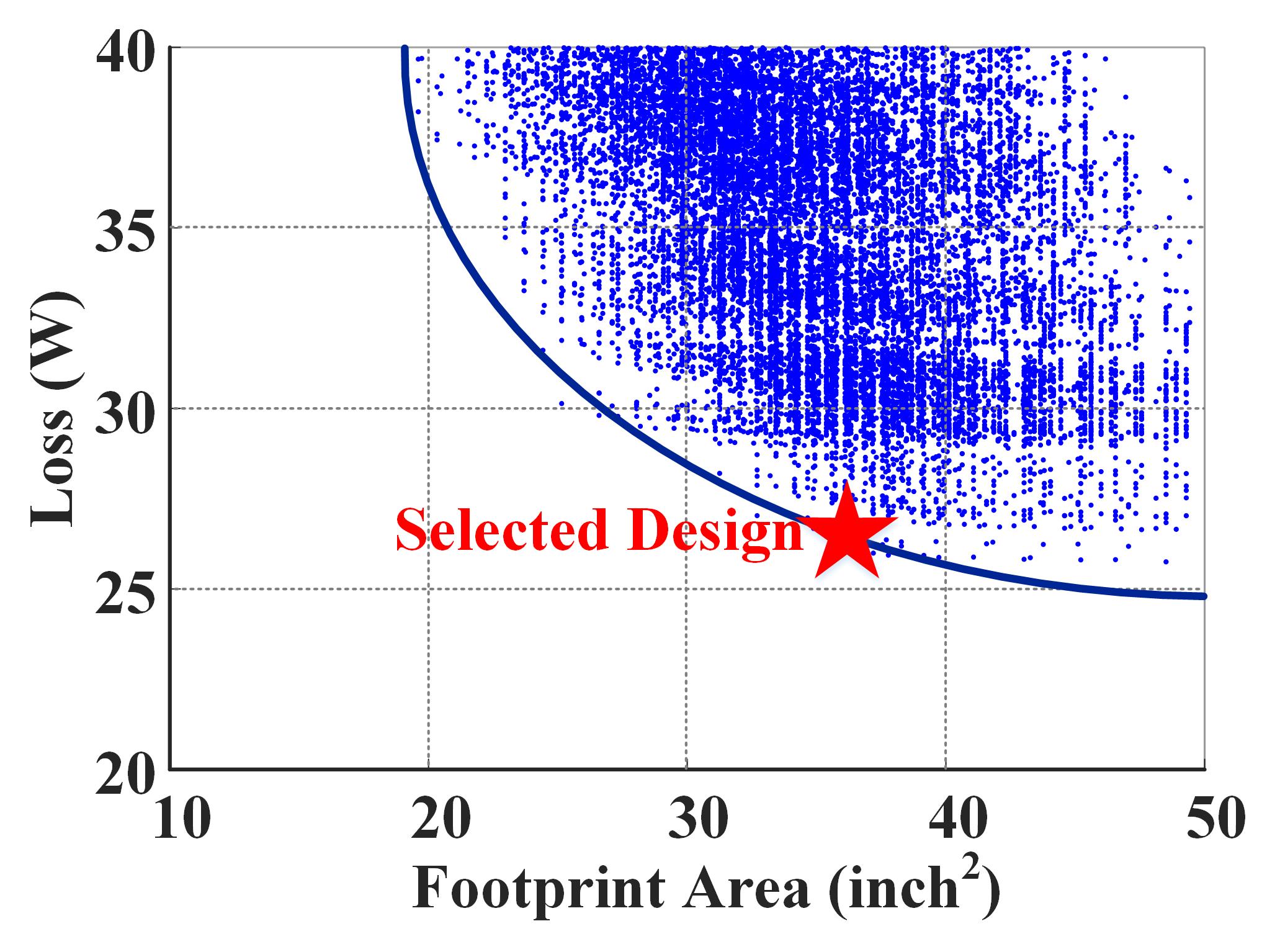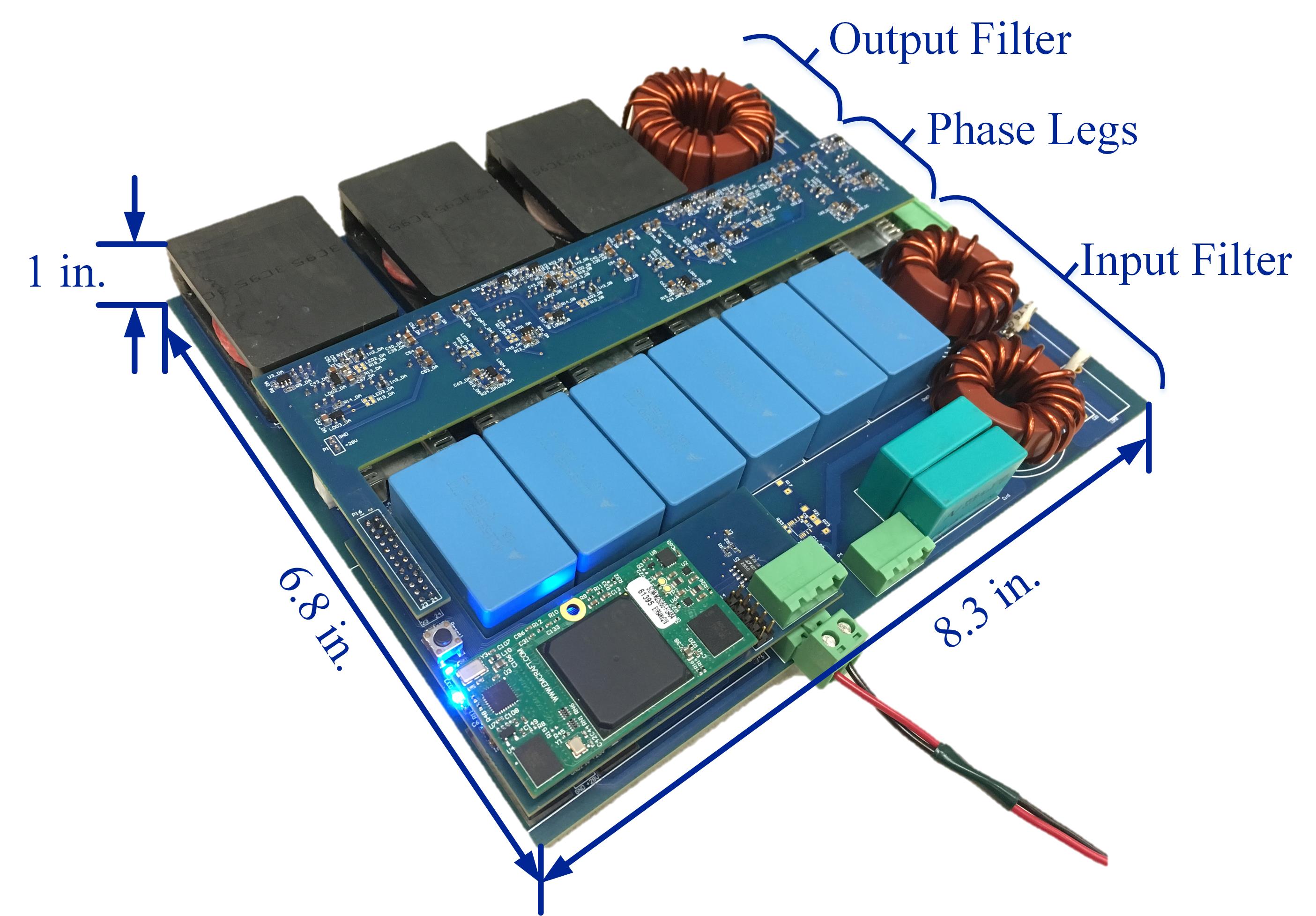RESEARCH
Towards a High Performance Motor Drive System for Aerospace Applications: Topology Evaluation, Converter Optimization and Hardware Verification

Converter topology is one of the key design variables, hence multiple topologies, namely, two-level voltage source converter, three-level neutral-point-clamped voltage source converter, T-type converter and three-phase triangular conduction mode converter are evaluated. Each topology has gone through converter optimization procedure under different power rating in order to explore their loss-size trade-offs (demon-strated as Pareto fronts). This study shows that T-type converter achieves the highest power rating of 5 kVA. Fig. 1 demonstrates the possible design points and loss-size Pareto front of 5 kVA T-type converter. Similar study has been conducted for other topology candidates and power ratings.
Finally, a 5 kVA free convection cooled prototype is constructed (shown in Fig. 2), which achieved a pow-er density of 80 W/inch3. Under nominal load, it achieved an efficiency of 99.3% (32.4 W from power stage, 4.0 W from auxiliary), in close agreement with the predicted loss (26.1 W from power stage, 4.0 W from auxiliary). The compliance with EMI and power quality standard was experimentally verified, which validated the EMI filter design.























































































